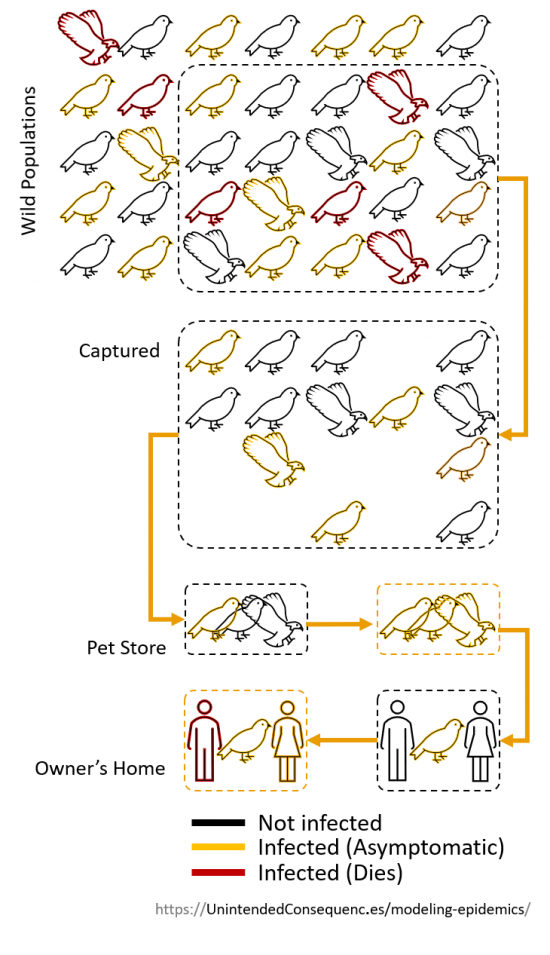I’ve written about high-profile diseases already (here, here, here, and many more). There’s something timeless about studying the way diseases spread and impact systems, especially when it comes to second-order effects. So let’s map out a few disease scares from the past century. Here’s a systems map look at parrot fever, 1918 flu, and modern-day bubonic plague.
I’m not including COVID-19 in the bunch since I’ve written about it frequently and there’s still a lot we don’t know about the system that led to its spread. Then again, there is also a lot we don’t know about the spread of the diseases below, but the perspectives on them are more static.
I decided to write this piece after seeing how hidden the pathways to illness can be and how straightforward the solutions can seem after the system is understood.
Psittacosis (Parrot Fever)
You’ve probably never heard of it, but in 1929, deaths from the then unknown disease psittacosis (also called “parrot fever”) scared a lot of people who thought it might be a new epidemic.
It took some sleuthing, but the commonality between people affected by this disease was their proximity to imported birds such as parrots and parakeets.
Keeping birds in the home as pets was a relatively new fashion. Salesmen sold birds door to door.
But even with importation of infected birds, we might have avoided the local spread of psittacosis if not for crowded conditions in pet stores and the easier spread of psittacosis among the birds, asymptomatic healthy seeming birds, and then close conditions between birds and human owners in the home.
Here’s a map of psittacosis flowing from wild populations to the pet owners.

Continue reading “Modeling Epidemics (Parrot Fever, 1918 Flu, Plague)”